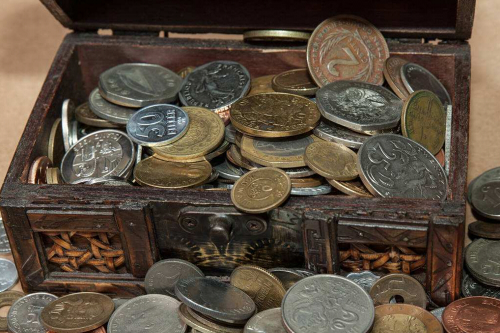Investing in Collectables: The Passion Index
投资收藏品:爱好指数
Handsome rewards await those who can afford the finest luxuries
顶级奢侈品投资者可望获得优厚回报
Diamonds, they say, are forever. They can be pricey, too. On December 5th 173 lots of jewels auctioned by Sotheby’s raised $54m. They included several pieces belonging to Sean Connery, known for playing James Bond. The following day a car favoured by Bond, the Aston Martin DB5, was auctioned for $2.7m. It was among 24 classic vehicles that together fetched $45m. The sales in New York early last month by the world’s two biggest auction houses, Sotheby’s and Christie’s, also involved fine wines, watches and other luxuries. Between them they sold $200m-worth.
人们说,钻石恒久远。而钻石也很昂贵。12月5日,苏富比拍卖了173件珠宝,总额5400万美元,其中包括因扮演邦德而为人熟知的肖恩·康纳利拥有的数件珠宝。第二天,一辆邦德钟爱的阿斯顿马丁DB5以270万美元拍出。当天共拍卖了24辆老爷车,总额4500万美元。世界最大的两家拍卖行苏富比和佳士得12月初在纽约拍卖的物品还包括优等葡萄酒、手表和其他奢侈品。两家共拍出两亿美元的藏品。
The Economist has compiled price indices for many of these items – diamonds, classic cars, fine wine, art, watches and other curios – and grouped them in a “passion” index. The index is weighted according to the holdings of high-net-worth individuals (HNWI) – defined as people with more than $1m of investable assets – as reported by Barclays. Our passion index has dropped by 2% a year, on average, for the past three years. But since the beginning of 2007 it has returned 5.9% on average, outperforming the total return from the MSCI world, a global stock market index.
《经济学人》为许多这样的藏品(钻石、老爷车、美酒、艺术品、手表和其他古董)编制了价格指数,并将之汇集成“爱好”指数。该指数根据巴克莱银行报告的高净值人士对这些藏品的持有情况加权。过去三年,该投资爱好指数平均每年下降2%。但自2007年初以来,其平均回报率为5.9%,超过了全球股票市场指数全球指数的总体回报。

Passion investing may help hedge other bets: art tends to be inversely correlated to stock market indices, for example. The supply of many collectables is fixed; demand for them is growing. The number of HNWIs rose from 11m to 16.5m from 2011 to 2016 and their collective wealth grew to $63trn, according to Capgemini, a consultancy. It forecasts that HNWI wealth will surpass $100trn by 2025, with about 10% invested in collectables.
爱好投资也许有助对冲其他投资的风险。比如,艺术品价格走势往往与股票市场指数相反。许多种类的收藏品供应量固定,而需求却不断增长。咨询公司凯捷咨询的数据显示,高净值人士从2011年的1100万人上升至2016年的1650万人,其总财富增至63万亿美元。凯捷咨询预测,到2025年,高净值人士的财富总值将超过100万亿美元,其中约10%将投资于收藏品。
Caution is advised. The returns from collectables may be hard to realise. First, the indices do not reflect the true cost of investing: insurance, storage and upkeep are all costly. Second, unlike shares, items in our index are neither very liquid (except wine) nor fungible (the goods are rarely interchangeable). When a quick sale is sought – often caused by debt, death or divorce – big losses can be incurred. Finally, auctions, the basis for many of our indices, may inflate the market thanks to reserve pricing. Unlike last month’s glamorous showing, losses are often booked quietly in private sales. And you cannot settle in bitcoin.
但投资仍需谨慎。收藏品投资的回报可能难以兑现。首先,这一指数并不反映投资的真实成本:保险、仓储及保养的费用都很高昂。其次,有别于股票,该指数中物品的流动性有限(葡萄酒倒是“流动”顺畅),也不可互换(这些物品很少相互交换)。当物主因债务、离世或离婚等原因急需出售藏品时,可能要承受巨大损失。最后,我们的许多指数是根据拍卖结果制定的,而拍卖中保留价格的设定可能抬高了市场行情。与上月亮丽的拍卖成果不同,私人市场上,卖家往往默默承受亏损。而且你还不能用比特币来结算。
下载:英文、中文版本








